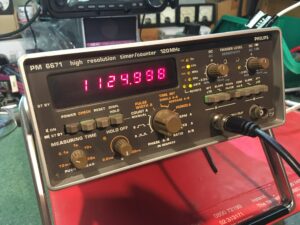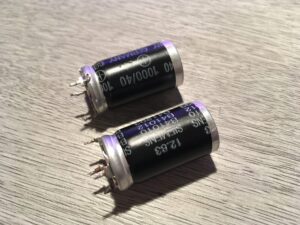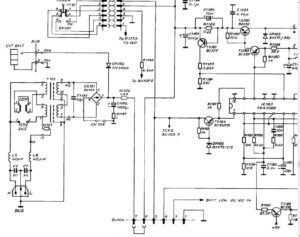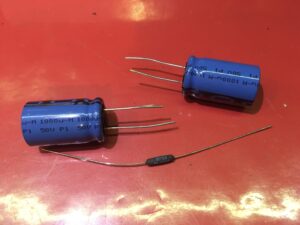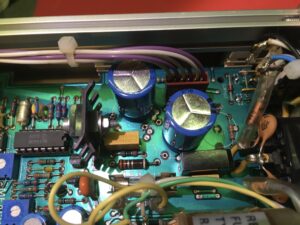I do like older test gear…it’s normally repairable quite easily and it’s possible to buy it for a fraction of its original price. Equipment that once cost thousands, can be had for just hundreds, or sometimes tens of pounds.
I went to the 2022 Galashiels Radio Rally on the 30th of October and spotted a rather forgotten looking Philips counter, at the bottom of a translucent plastic box, on the ‘bring and buy’ stall. I knew the chap running the stall and asked for a price…’it doesn’t work and makes a smell when you turn it on…smells like capacitors’ I was told. It became mine for the princely sum of a fiver and it naturally came home with me.
It was in pretty good condition and I found the user manual on-line here and the service manual on-line here. If you need them, and these links ever stop working, drop me a line.
I opened it up quite easily by loosening the four screws securing the top and bottom covers at the back. My counter has the IEEE 488 interface built in, so I removed the four screws holding that in place, then unplugged the ribbon cable, allowing me to remove the board completely.
The fault was immediately apparent. The two smoothing capacitors had clearly been very hot, so hot that their plastic sleeves had shrunk…I must remember this excuse when my motorcycle gear is a bit tight after Christmas. A 1.6A fuse was open circuit and a resistor had clearly been just a bit hot…I’m guessing it was actually the source of the smell and that it had been glowing red before it failed.
Looking at the service manual, the first smoothing capacitor is directly on the output of the bridge rectifier, with a one ohm, one watt, wirewound resistor from its negative terminal to the zero volt rail. The DC from this circuit is then fed through the 1.6A fuse to the second smoothing capacitor.
On the diagram, the faulty parts were C1182 and C1183 (both 1,000uF at 40V), which measured about ten ohms at DC when checked; clearly they should be open circuit to DC, also R1181 (1 ohm at 1W, wirewound) which overheated and burned out when C1182 became short circuit, and fuse VL102 (1.6A fast blow) which blew when C1183 became short circuit. Good protection built in by Philips…who had been bought out by Fluke around the time these counters were made.
I’m guessing that the counter hadn’t been powered up for many years before it was tested prior to its trip to the Galashiels Radio Rally. The two capacitors would have depolarised during those years, and couldn’t recover in time when power was applied.
I carefully removed the two capacitors, the resistor and the blown fuse. I then applied power from a current regulated external supply, carefully increasing the voltage to about 18v whereupon the counter sprang into life. With the fuse still out, I measured the output of the bridge rectifier with no load at just under 30V. I only had 35V 1,000uF capacitors so ordered new 50V ones, plus a new resistor from RS Components. I like my electrolytics to have 50% voltage headroom if possible, and also think it’s worth investing in good components, rather than the cheap nasty ones frequently found on eBay.
The parts were refreshingly made somewhere other than China (Austria and Mexico in fact) and I first fitted the capacitor with the resistor in its negative lead…on testing, the voltage across it read just under 3oV, and there was no smell, hot components or other signs of smoke escaping from the components. The second capacitor and fuse were then fitted…the counter then powered up perfectly.
I’ve gone into detail with this fault, which may be obvious to many, but some people are just starting out and it may help them understand better.
After a bit of cleaning it was reassembled and thoroughly tested. This bit of test gear has much more functionality than basic frequency counters, although that is likely to be its primary function on my bench. It’s definitely a keeper.
For experiments with HF radio equipment, a 120MHz upper limit is more than sufficient.
At the Spennymoor Radio Rally on the 27th November 2022, I bought a Maplin Frequency Counter that works right up to 600MHz…for just a tenner…and it works perfectly. So, I’m covered for 2m and above if I need it.
